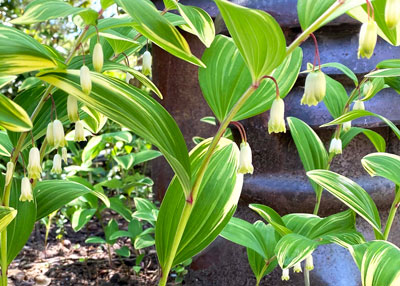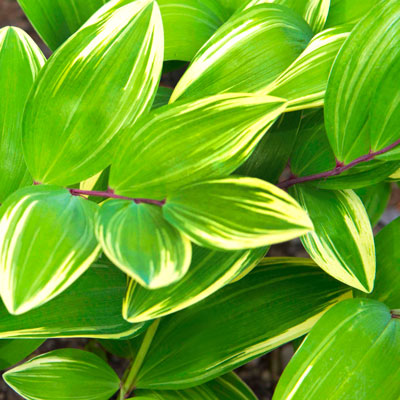Plant of the Week: Solomon’s Seal
In his time at the Dallas Arboretum my friend Jimmy Turner gave a report on my radio program each week in which he featured an unusual plant that had caught his eye. Jimmy is now in Australia but the impact he made on the horticulture of Texas will be felt for many years.

Solomon’s Seal is a plant I’d never known before he spoke about it glamorously that Saturday morning. To hear Jimmy’s description, I had to have it. I got busy, and have it I do.
When Jimmy said we could grow it where we might otherwise grow hostas or ferns, he really got my attention. I have nothing but shade in my gardens. It’s done well in moist, shady spots in our landscape.
I’ve given it the same bed preparation I give for my ferns, ajuga, summer phlox, oxalis, violets, Texas Gold columbines and other shade-loving perennials. I mix in several inches of a variety of types of organic matter and 1 inch of expanded shale in my tight clay soil. I rototill all of that to a depth of 6-8 inches, and I set my Solomon’s Seal plants where they can remain undisturbed for many years.
I keep my plants moist all summer long, and I fertilize them with a high-quality, all-nitrogen fertilizer where 30 to 40 percent of the nitrogen is in slow-release form. (You may notice that that’s the same plant food that I use on my turfgrass and tomatoes – and almost all of the other plants that I grow.)

Solomon’s Seal isn’t a plant that you’ll find in every retail nursery in Texas. In fact, you’ll mainly find it only in nurseries that specialize in unusual perennials. If you do find it, grab it. They sell out almost as quickly as nurseries get them in.
If you can’t find Solomon’s Seal locally, search online. There are a few sources who list one or two types. For one, Plant Delights, the incredible resource from North Carolina offers several outstanding cultivars. See them at https://www.plantdelights.com/collections/polygonatum
Note: My Solomon’s Seal plants were 3 weeks slow in emerging this spring. I knew they were winter-hardy, especially after they survived February 2021. I just couldn’t figure out why they weren’t coming up. Now that they’re up and blooming I know it must have been the ongoing cold soils of March.
